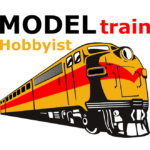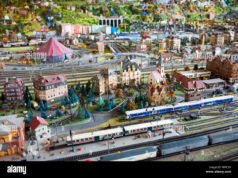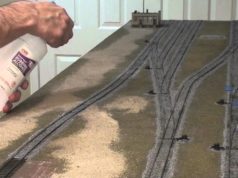Before we get into the different types of couplers, you might be wondering what couplers are. A coupler, put simply, is the mechanism used to connect rolling stock to each other, and to the locomotive.
In the real world of railroading, couplers have a standard design to increase usability across the different rolling stock. Unfortunately, the model railroading world is not the same. Over time, with the advancement of technology, different manufacturers, and countries, the coupler has changed. This change has caused a problem with model railroaders as they increase their collection. Buying trains from different manufacturers, even if they are the same scale, may come with completely different couplers, and they may not be compatible with each other. So, we are going to show you the different types of couplers you would find on trains sold in the U.S.A., as the European and Australian countries have different sets of couplers they use.
Hook-and-loop
These are couplers that have a metal or plastic loop, and a hook. The hook is sprung and connects with the loop to join the two cars together. This type of coupler was used by Lionel in the post-war period, but is most commonly used by Large/G scale trains today. The coupling is automatic, so there is no need to make sure the couplers are centered, which makes it easy, however, uncoupling can be a bit difficult. The large loops allow trains to navigate tight curves without needing the couplers to move, and therefore cause derailments. The hook-and-loop couplers are not prototypical and are asymmetrical; requiring all cars to be pointing in the same direction.
Horn-Hook or X2F
These couplers used to be common with HO scale model trains, but are now found on almost all N scale trains. They are made from a single piece of molded plastic, and use pressure from the side to stay locked in place. This side pressure can cause problems when backing up your train, causing it to derail. Rapido has “left hook” couplers, which are similar to the horn-hook and are used on most N scale trains, but they suffer the same disadvantages. Most modelers don’t like horn-hook couplers, because they don’t look prototypical, and will convert them to knuckle type couplers. This can be a lot of work, especially if couplers are mounted on the trucks, like in N scale, and require you to replace the whole truck assembly. It is recommended to convert cars and locomotives one by one, and make conversion cars with a knuckle coupler on one side, and horn-hook or Rapido coupler on the other. This allows you to continue to run all your cars until they are all converted.
Knuckle
The most popular type of coupler that model railroaders use is the knuckle coupler. These couplers look better because they are more prototypical and bring an added realism to your trains. Originally manufactured by Kadee, the knuckle coupler is commonly used on HO scale trains, but is also made for both smaller and larger scale trains. Since the patent has expired on the knuckle design, other manufacturers have been allowed to make their own version. Bachmann, for example, has E-Z Mate Mark II couplers that come standard on most of their HO scale trains. Knuckle couplers are made with a steel pin that resembles an air brake hose and allows the couplers to be magnetically released when positioned over a section of track with an uncoupler. Also, because of the knuckle couplers design, there are fewer derailments when backing up the train when compared to the Horn-Hook coupler.
Coupler Height
One important thing to point out is that couplers won’t work if they are not the same height. To avoid this, I recommend that you get a coupler height gauge that is NMRA-compliant from NMRA (National Model Railroad Association) or Kadee. If you have a car where the coupler is low, you may need to add washers between truck and car. If the coupler is connected to truck, then you may have to replace the whole truck or add bigger wheels. If you have a car where the coupler is high, you can lower the position of the coupler by putting something between the bottom of car and coupler pocket.
Magnetic Uncouplers
First manufactured by Kadee, the uncoupler is a section of the track that has a special magnet underneath. To activate, the train is backed up and stopped over the uncoupler, and the magnet moves the pin so that the couplers come apart. Then pull the train forward, and back it up again to position the car without the couplers recoupling. This method is called “delayed uncoupling,” whereas “regular uncoupling” will recouple itself after the car is pushed off the magnet.
Electric Uncouplers
These are available in all scales, and are made with a wire wrapped around a cylinder that creates a magnetic field when an electric current is run through it. This type of uncoupler needs to be mounted in space cut out from under the track. As you can see, there are a few types of couplers to choose from, and there really isn’t a “best” coupler either. Even though the knuckle coupler is the most popular, it doesn’t mean it’s the right one for you. In the end, it all comes down to what you prefer for your trains, and what makes you happy. When using uncouplers, you should plan for their placement when you are doing your layout planning. They are easier to install while laying track rather than replacing a section of track later. Enjoy, and happy railroading!






